Snake plants are popular for their unique and attractive appearance, low maintenance, and air-purifying qualities. However, if you notice your snake plant drooping, it can be a cause for concern.
Drooping can be a sign of an underlying issue that needs to be addressed before it’s too late. In this article, we will explore the common reasons why snake plants droop and how to fix them.
One of the most common reasons for snake plant drooping is overwatering. Snake plants are succulents and can store water in their leaves, making them drought-tolerant.
However, if they are overwatered, the roots can rot, causing the plant to droop. Underwatering can also cause drooping, but this is less common. Understanding the right watering and drainage practices is crucial to prevent drooping and keep your snake plant healthy.
Another reason for snake plant drooping is poor soil quality or lack of nutrients. Snake plants prefer well-draining soil that is slightly acidic, and they can benefit from occasional fertilization.
Repotting your snake plant every few years can also help prevent drooping and promote healthy growth. Proper lighting, temperature, and pest control are other factors that can affect snake plant health.
Understanding Snake Plant Drooping
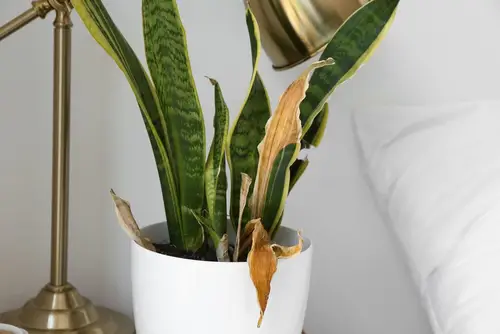
See other reasons why your favorite houseplants might be drooping & how ro remedy it:
Identifying Drooping Snake Plant
A drooping snake plant is a common problem that many plant owners face. The most obvious sign of a drooping snake plant is the leaves that droop or bend over. The leaves may also appear wilted or soft to the touch. In severe cases, the leaves may turn yellow and fall off.
Causes of Snake Plant Drooping
There are several reasons why a snake plant may droop. Here are some of the most common causes:
- Lack of Water: Snake plants do not require frequent watering, but they do need enough water to survive. If the soil is too dry, the leaves may droop or wilt. On the other hand, overwatering can cause root rot, which can also lead to drooping leaves.
- Poor Drainage: Snake plants need well-draining soil to prevent water from accumulating around the roots. If the soil does not drain well, the plant may develop root rot, which can cause the leaves to droop.
- Insufficient Light: Snake plants thrive in bright, indirect light. If the plant is not getting enough light, the leaves may droop or bend over. However, too much direct sunlight can also cause the leaves to burn and droop.
- Pests: Pests such as spider mites or mealybugs can cause significant damage to snake plants. These pests can suck the sap from the leaves, causing them to droop or wilt.
- Temperature and Humidity: Snake plants prefer warm, humid conditions. If the temperature is too low or the humidity is too low, the leaves may droop or wilt.
Watering and Drainage
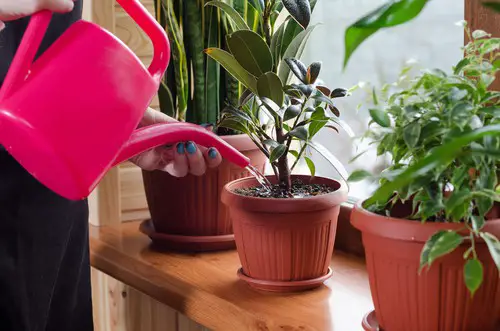
1. Overwatering and Underwatering
One of the most common reasons for snake plant drooping is overwatering or underwatering. Snake plants are succulents, which means they store water in their leaves and do not need frequent watering.
Overwatering can lead to root rot, which can cause the plant to droop and eventually die. On the other hand, underwatering can cause the leaves to become limp and droop.
To avoid overwatering, it is recommended to water the plant only when the top inch of soil is dry. Snake plants prefer well-draining soil, so it is important to use a pot with drainage holes to allow excess water to escape. If the plant is overwatered, the soil should be allowed to dry out completely before watering again.
2. Importance of Drainage
Proper drainage is crucial for the health of a snake plant. Without drainage holes, excess water can accumulate at the bottom of the pot and lead to root rot. It is recommended to use a pot with drainage holes and a saucer to catch excess water.
3. Fixing Poor Drainage
If a snake plant is drooping due to poor drainage, it is important to fix the issue as soon as possible. One solution is to repot the plant in a pot with drainage holes and fresh, well-draining soil. Another solution is to add a layer of gravel or rocks at the bottom of the pot to improve drainage.
Soil and Repotting

Choosing the Right Soil
Choosing the right soil is crucial when it comes to keeping your snake plant healthy and preventing it from drooping. Snake plants prefer well-draining soil that is not too moist.
A good soil mix for snake plants should be composed of a combination of potting soil, perlite, and sand. This mix will provide good drainage and aeration, which will prevent root rot and other soil-related issues.
Repotting Your Snake Plant
Repotting your snake plant is necessary when it becomes rootbound or when the soil has become too compacted. A rootbound snake plant will have roots that have grown tightly around the inside of the pot, making it difficult for the plant to absorb water and nutrients.
Repotting will give your snake plant more room to grow and help it thrive.
When repotting your snake plant, choose a pot that is at least two inches wider than the current pot. Make sure the pot has drainage holes to allow excess water to drain out. Fill the new pot with the soil mix mentioned above, leaving enough space for the root ball of the plant.
Dealing with Root Rot
Root rot is a common issue that can cause snake plant drooping. It is caused by overwatering or poor drainage, which leads to the roots becoming waterlogged and eventually rotting. If you notice that your snake plant is drooping and the soil is wet, it may be suffering from root rot.
To fix root rot, you will need to repot your snake plant in fresh, well-draining soil. Gently remove the plant from its current pot and remove any dead or rotting roots. Trim any healthy roots that are too long and replant the snake plant in the new pot with fresh soil.
Lighting and Temperature

Ideal Lighting Conditions
Snake plants are known for their ability to thrive in low light conditions, making them an ideal plant for homes and offices. However, they still require some amount of light to grow and remain healthy.
The ideal lighting conditions for a snake plant are bright, indirect light. Direct sunlight can be harmful to the plant, causing its leaves to burn.
If the plant is not getting enough light, it will start to droop and lose its shape. On the other hand, if the plant is getting too much light, it may become discolored or develop brown patches on its leaves. To ensure that your snake plant is getting sufficient light, place it near a south-facing window or in a well-lit room.
Temperature Requirements
Snake plants prefer warm temperatures and can tolerate a range of temperatures between 60°F to 85°F (15°C to 29°C). However, they do not like extreme temperatures, especially cold drafts. If the plant is exposed to temperatures below 50°F (10°C), it may start to droop and eventually die.
It is important to keep the plant away from air conditioning vents and drafty windows. If the plant is placed in an area with poor lighting and lack of heat, it may also start to droop.
Pest and Diseases
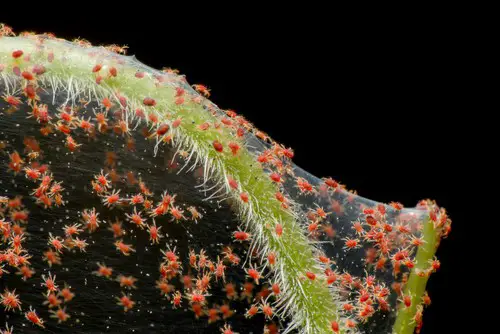
Identifying Common Pests
Snake plants are generally quite hardy and resistant to pests and diseases. However, there are a few common pests that can infest snake plants, including spider mites and mealybugs.
Spider mites are tiny pests that can be difficult to spot with the naked eye. They are typically found on the undersides of leaves and can cause damage by sucking the sap out of the plant. Signs of a spider mite infestation include small yellow or white spots on the leaves, webbing on the plant, and leaf drop.
Mealybugs are another common pest that can infest snake plants. They are small, white, and fuzzy insects that feed on the sap of the plant. Signs of a mealybug infestation include yellowing leaves, a sticky residue on the plant, and the presence of the insects themselves.
Preventing and Treating Diseases
In addition to pests, snake plants can also be susceptible to certain diseases, such as fungi. Fungi can cause the leaves of the plant to turn brown, wilt, and eventually die. To prevent fungi from infecting your snake plant, it is important to maintain proper levels of humidity and avoid overwatering.
If your snake plant does become infected with a pest or disease, there are a few steps you can take to treat it. First, isolate the affected plant to prevent the infestation from spreading to other plants.
Then, remove any affected leaves or stems and dispose of them properly. Finally, treat the plant with an appropriate pesticide or fungicide, following the instructions carefully to avoid damaging the plant.
Care and Maintenance
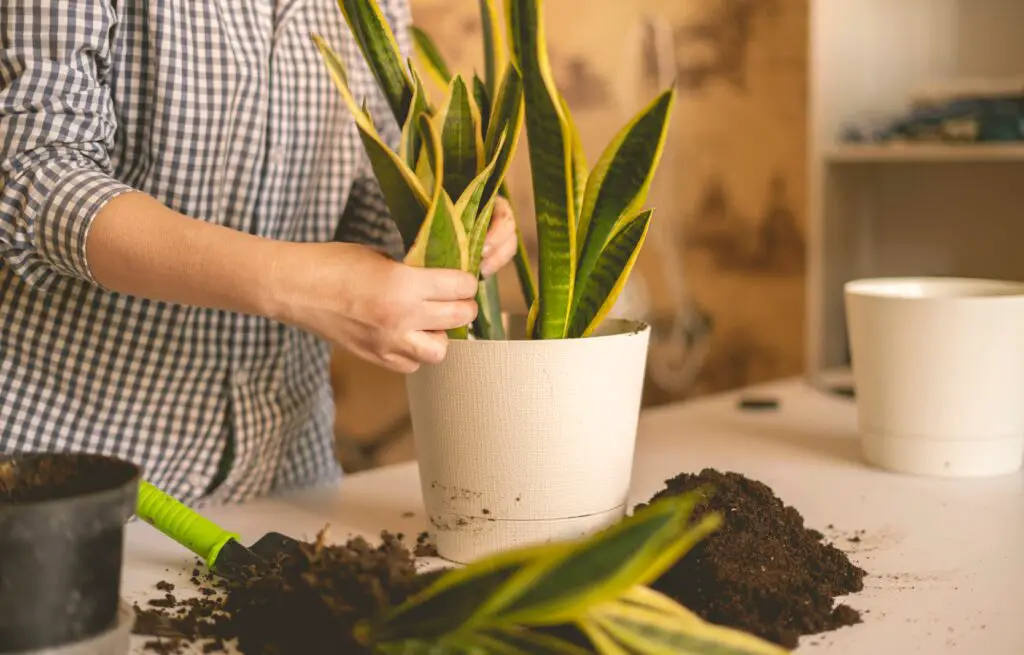
Snake plants are relatively easy to care for and maintain. With proper care, they can grow healthy and strong. Here are some tips on how to take care of your snake plant.
Proper Feeding and Fertilization
Snake plants do not require a lot of fertilizer. In fact, over-fertilizing your snake plant can be harmful. It is recommended to fertilize your snake plant only once or twice a year during the growing season. Use a balanced fertilizer and follow the instructions on the label.
When feeding your snake plant, it is important to avoid getting the fertilizer on the leaves. This can cause burning and damage to the plant. Instead, apply the fertilizer to the soil around the base of the plant.
Pruning and Cutting Back
Pruning and cutting back your snake plant can help promote healthy growth. If you notice any dead or yellow leaves, remove them from the plant. This will prevent any diseases from spreading to other parts of the plant.
If your snake plant has become too large for its pot, it may be time to repot it. When repotting, remove any dead or yellow leaves and cut back any overgrown roots. This will help the plant to grow stronger and healthier.
Conclusion
A drooping snake plant can be caused by a variety of factors, including overwatering, underwatering, poor soil drainage, lack of sunlight, and pests. By identifying the root cause of the problem, plant owners can take the necessary steps to revive their snake plant and encourage healthy growth.
Some common solutions to fix a drooping snake plant include adjusting watering frequency and amount, repotting the plant in well-draining soil, providing adequate sunlight, and treating any pest infestations.
It’s important to note that snake plants are hardy and resilient, and with proper care, they can bounce back from drooping and continue to thrive.
To prevent future drooping, it’s recommended to maintain a consistent watering schedule, avoid overwatering, and ensure proper soil drainage. Additionally, regularly inspecting the plant for signs of pests and promptly treating any infestations can help keep the plant healthy and happy.
Frequently Asked Questions
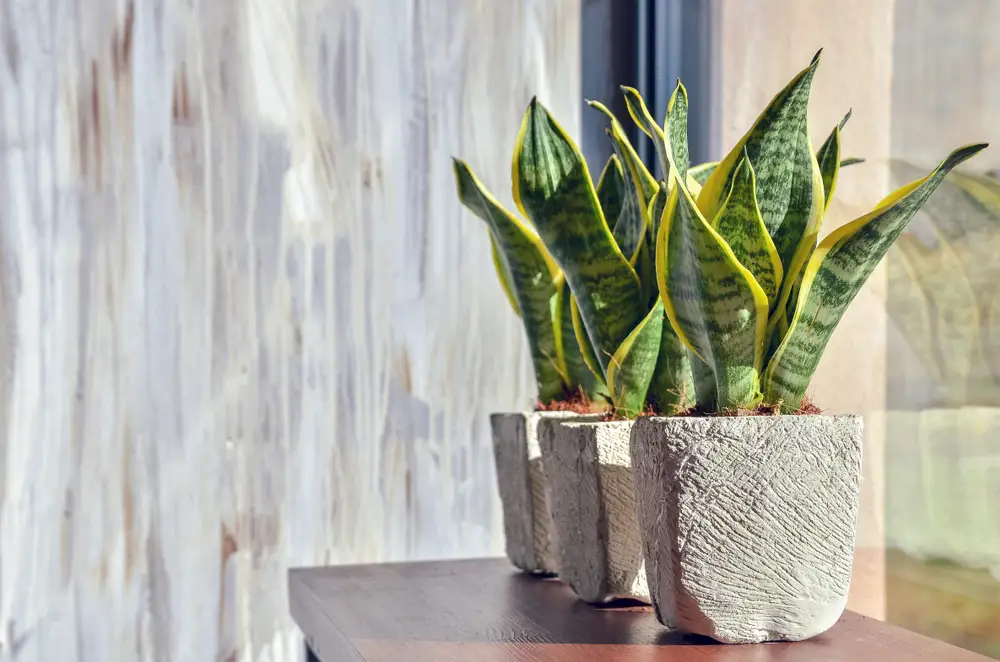
Will my snake plant leaves recover from drooping?
Yes, snake plant leaves can recover from drooping if the underlying issue is addressed promptly. However, it may take some time for the leaves to regain their upright posture.
How do I fix a drooping snake plant?
The first step to fixing a drooping snake plant is to identify the cause. Common causes include overwatering, underwatering, and poor drainage. Once the cause is identified, the appropriate action can be taken.
For example, if the plant is overwatered, it may need to be repotted in well-draining soil or allowed to dry out before watering again.
Why is my snake plant wilting and turning yellow?
A snake plant that is wilting and turning yellow may be suffering from overwatering or underwatering. It could also be a sign of root rot, which is caused by soil that is too moist. To fix the issue, the plant should be examined and the underlying cause addressed.
What should I do if my snake plant is underwatered?
If a snake plant is underwatered, it may begin to droop or wilt. To fix the issue, the plant should be watered thoroughly and placed in a location with adequate light. It may also be helpful to mist the leaves with water to increase humidity.
How can I fix an overwatered snake plant?
An overwatered snake plant can be fixed by removing it from its pot and allowing the roots to dry out. Once the roots have dried, the plant can be repotted in well-draining soil. It may also be helpful to reduce the frequency of watering and ensure that the plant is not sitting in standing water.
Can a wilted snake plant be revived?
Yes, a wilted snake plant can be revived if the underlying issue is addressed promptly. This may involve adjusting the watering schedule, repotting the plant, or providing additional light. However, it may take some time for the plant to recover fully.

Hey, I’m Lisa and I’ve been an avid gardener for over 30 years. I love writing, talking and living in the garden! Feel free to connect with me on my socials below


